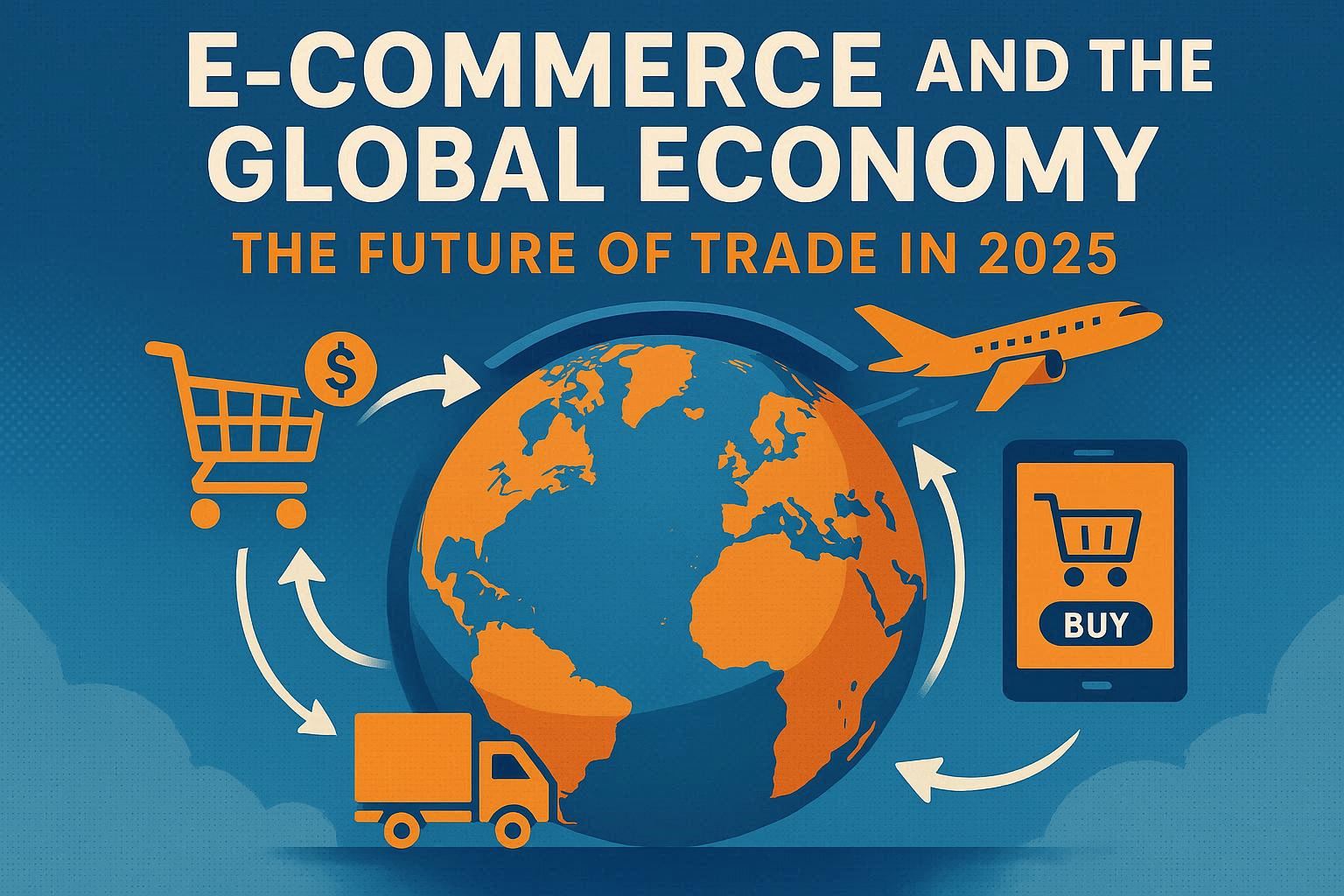Shopping is no longer limited to physical stores. In 2025, e-commerce has become a central force in the global economy, reshaping how businesses sell, how consumers buy, and how supply chains operate. From small entrepreneurs to global corporations, online trade is opening new markets and opportunities like never before.
This article examines how e-commerce drives economic growth, its benefits, challenges, and what the future of digital trade looks like.
1. The Rise of E-commerce
Over the past two decades, e-commerce has transformed from a convenience into a necessity. Platforms like Amazon, Alibaba, and Shopify dominate global trade, while social media marketplaces and mobile shopping apps expand access for millions of small businesses. By 2025, global e-commerce sales are expected to exceed $7 trillion.
2. Economic Benefits of E-commerce
- Market Expansion – Small businesses can reach international customers with minimal investment.
- Job Creation – E-commerce creates jobs in logistics, digital marketing, customer service, and IT.
- Efficiency – Online platforms reduce costs compared to traditional retail stores.
- Consumer Choice – Customers enjoy wider product selection and competitive pricing.
3. The Role of Technology in E-commerce
- AI and Personalization – Artificial intelligence tailors shopping experiences through recommendations.
- Blockchain – Provides secure, transparent transactions and reduces fraud.
- Mobile Commerce – Smartphones make shopping accessible anytime, anywhere.
- Logistics Innovation – Drones, automated warehouses, and smart delivery systems speed up shipping.
4. Impact on Global Trade
E-commerce reduces geographical barriers and promotes global trade. Consumers in Africa can buy products from Europe, while Asian startups can sell directly to North America. This democratization of trade increases competition but also creates opportunities for emerging economies.
5. Challenges of E-commerce
- Cybersecurity Risks – Hacking and data theft remain major threats.
- Logistics Costs – International shipping and customs regulations can be complex.
- Market Saturation – High competition makes it difficult for small sellers to stand out.
- Consumer Trust – Fake products and scams damage the credibility of online platforms.
6. Social and Economic Implications
- Urban to Rural Expansion – E-commerce enables rural populations to access products not available locally.
- Women and Youth Empowerment – Online platforms create opportunities for entrepreneurs who may lack access to traditional markets.
- Changing Retail Landscape – Many physical stores now adopt hybrid models combining offline and online services.
7. Future of E-commerce in 2025 and Beyond
Experts predict several key trends shaping the future of e-commerce:
- More integration of virtual reality (VR) and augmented reality (AR) to enhance online shopping.
- Growth of cross-border digital trade agreements to simplify international sales.
- Expansion of eco-friendly e-commerce with sustainable packaging and greener logistics.
- Increasing role of social commerce where platforms like Instagram and TikTok become shopping hubs.
Conclusion
E-commerce is no longer just part of the economy—it is becoming the backbone of global trade. While challenges such as cybersecurity and logistics remain, the opportunities for businesses, consumers, and economies are enormous. In 2025, companies that embrace digital trade will lead the way in innovation, competitiveness, and growth.

